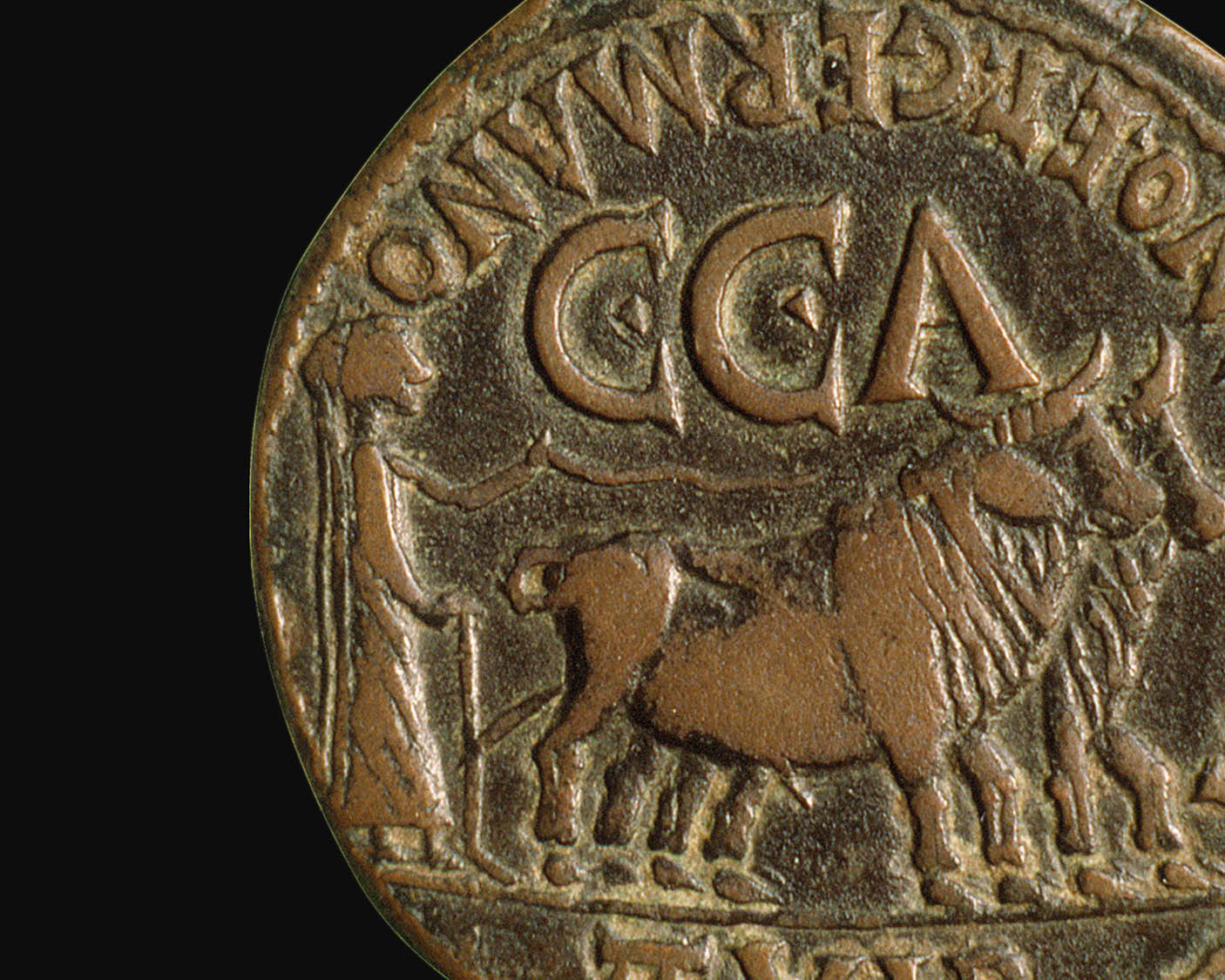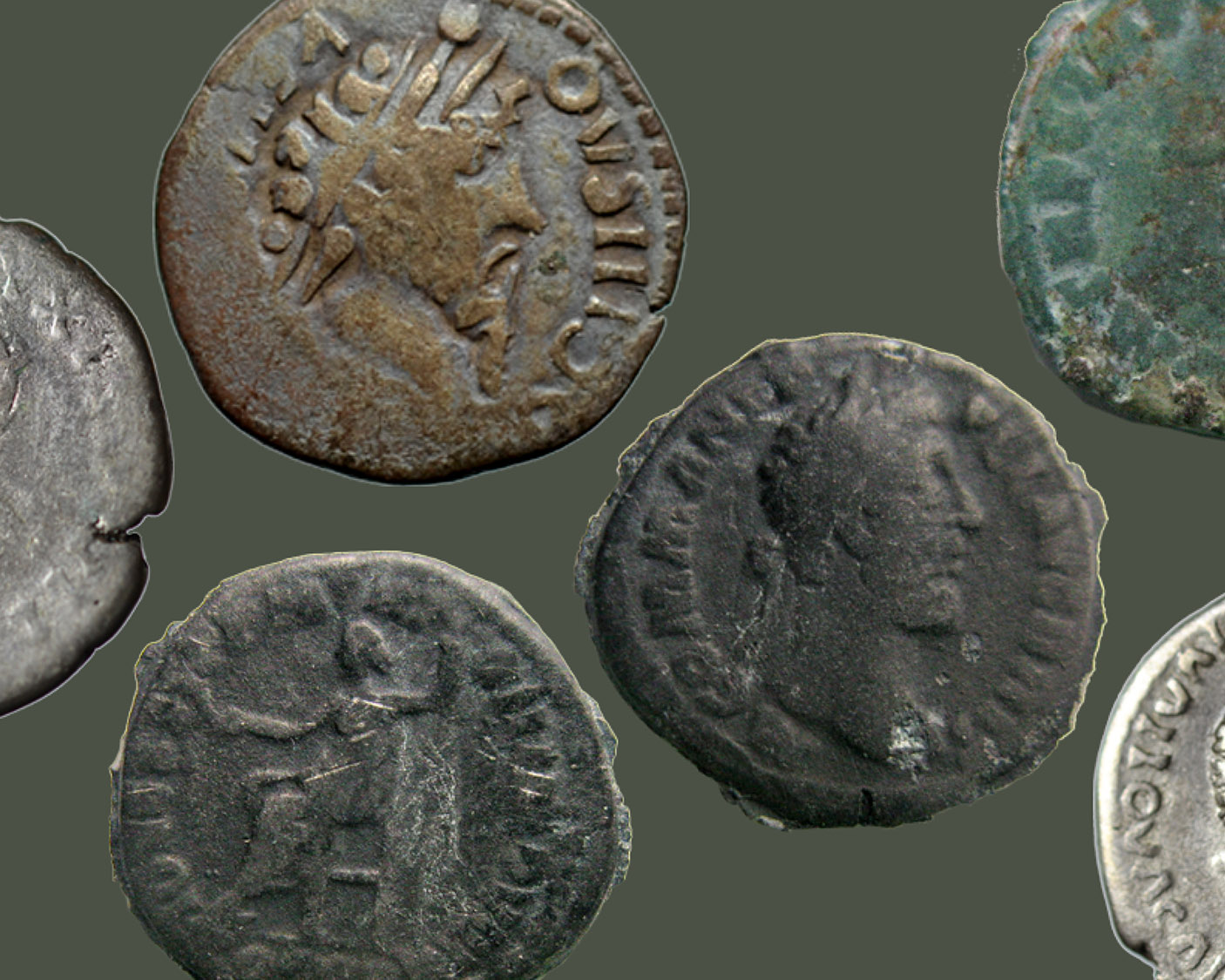France: Inflation and Revolution
Coins of the Revolution
The French monetary system under the monarchy, like most of the European systems of that period and their Roman predecessor, distinguished both units of account and physical coins. As such, monetary reforms could simply modify the face value of existing coins without necessarily withdrawing them from circulation. Until the Revolution, the French used the system where 1livre = 20 sols = 240 deniers (corresponding to the British pounds, shillingsand pence). After the disorders following the wars of Louis XIV and the collapse of the system of John Law, the relationship between physical coins and units of account was stabilized in 1726. The gold louis d’or was worth 24 livres and the silver écu, 6 livres, with various base-metal coins providing fractional change.
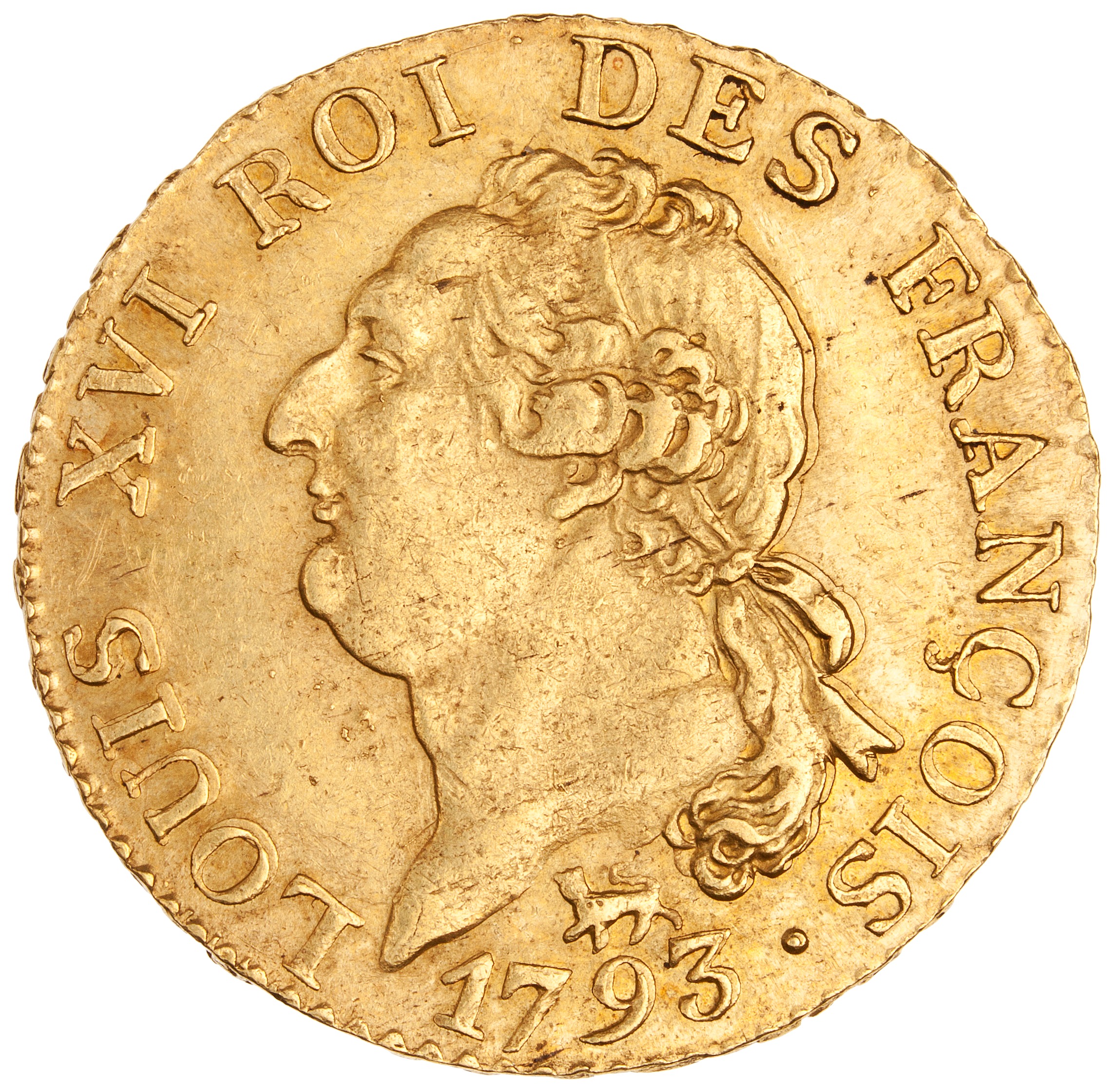
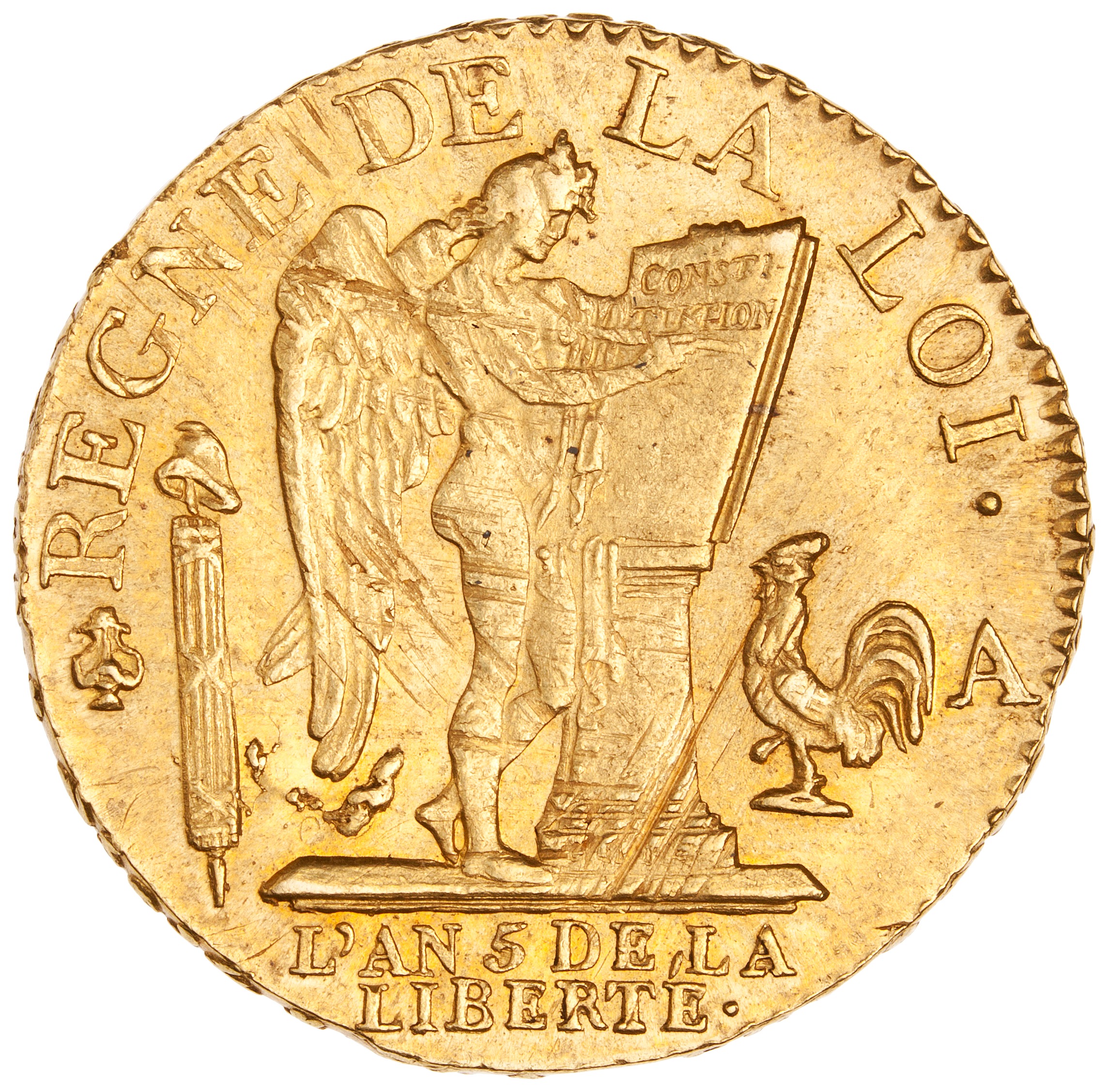
Louis d’or, 1793. Gold, 7.60 g. Paris (ANS 1927.160.1, gift of W. R. Powell).
Although Louis XVI had been beheaded on January 21, 1793, the coin was still issued with his portrait and retained most of the characteristics of the previous regime, including weight and module, besides giving to Louis XVI the title ‘king of the French’ and adopting revolutionary mottoes on the reverse.


Ecu, 1793. Silver, 29.37 g. Montpellier (ANS 1920.147.235, gift of W. R. Powell).
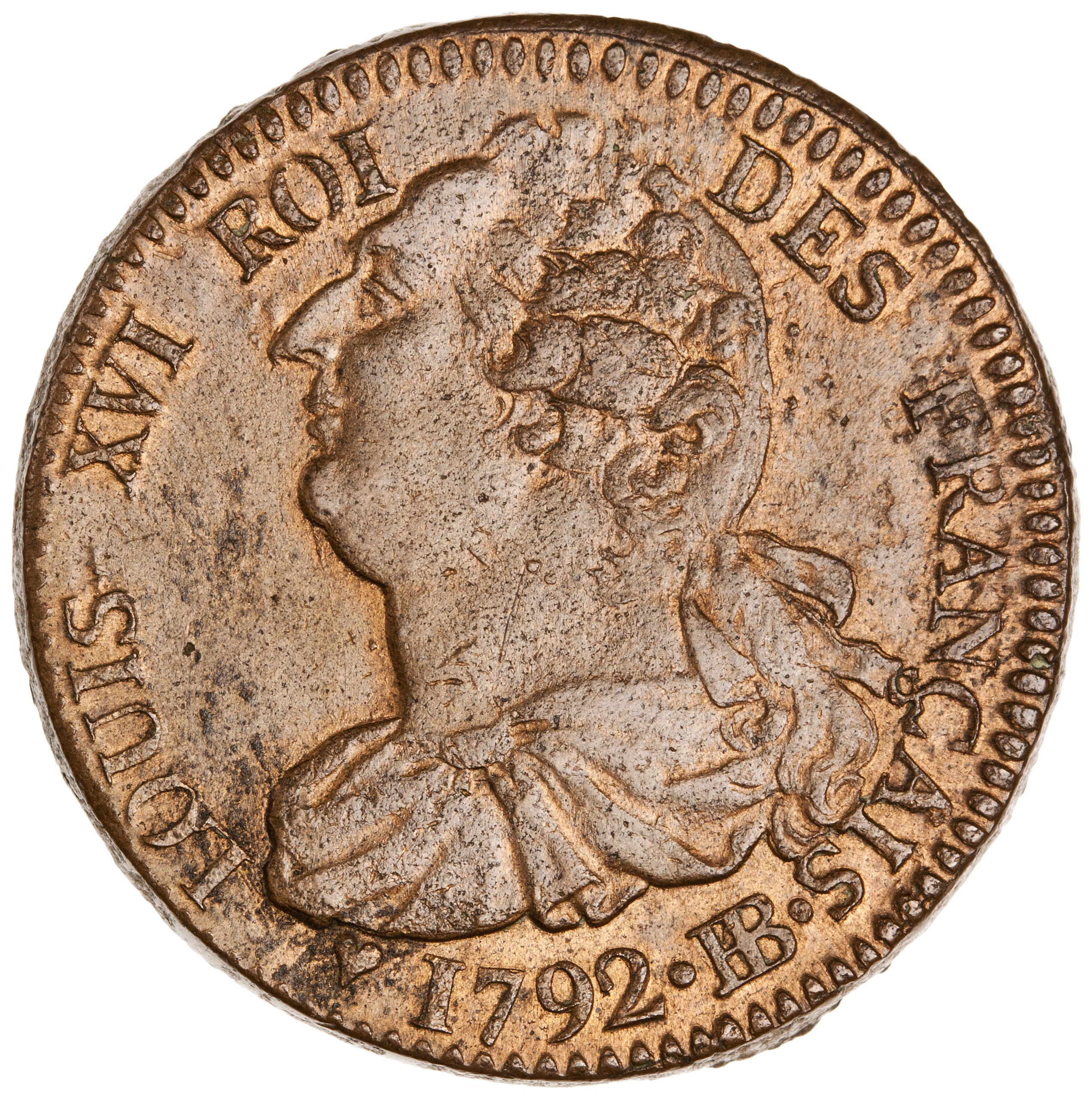

2 sol, 1792. Copper, 23.91 g. Strasbourg (ANS 1920.147.226, gift of W. R. Powell).
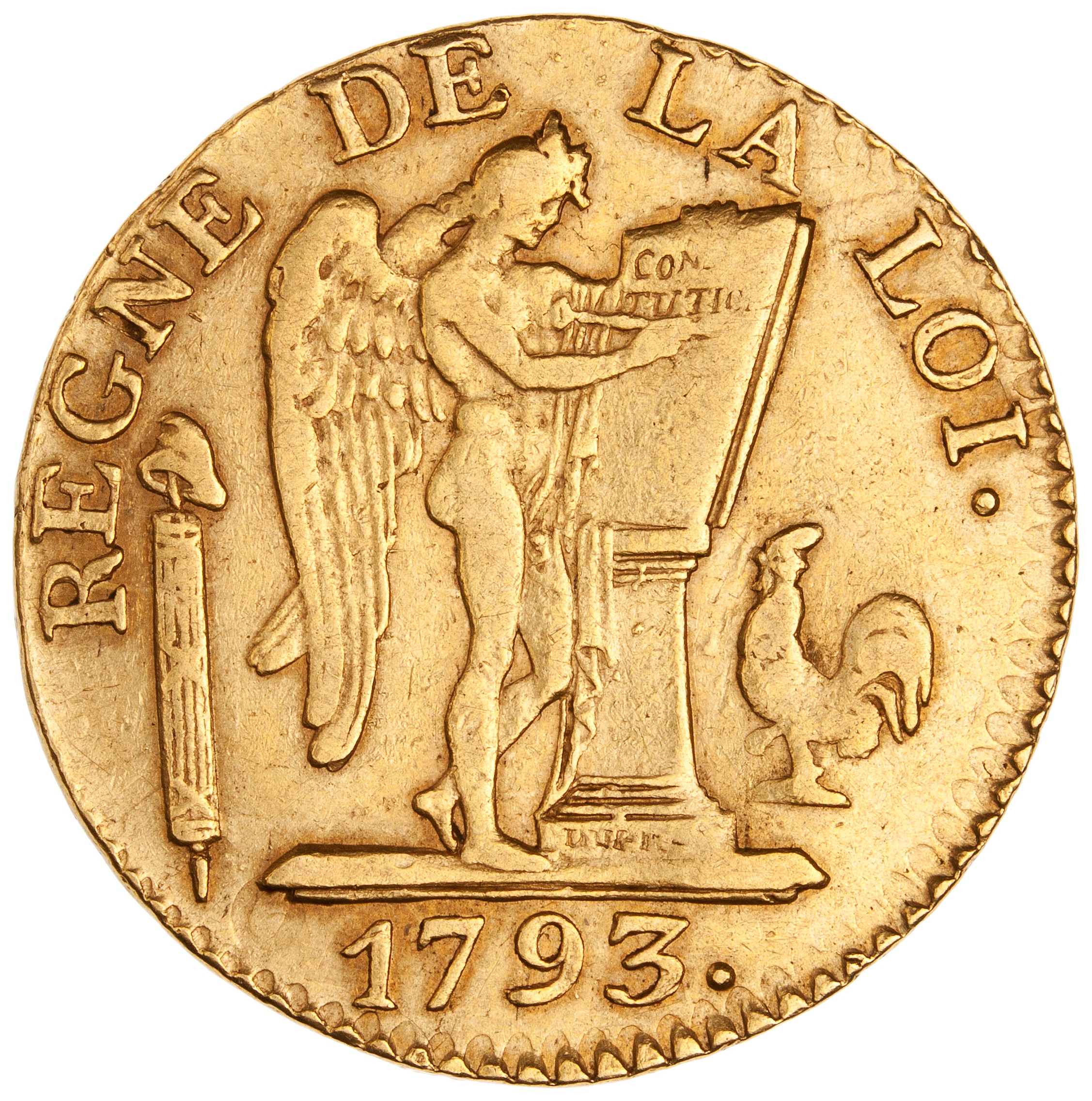
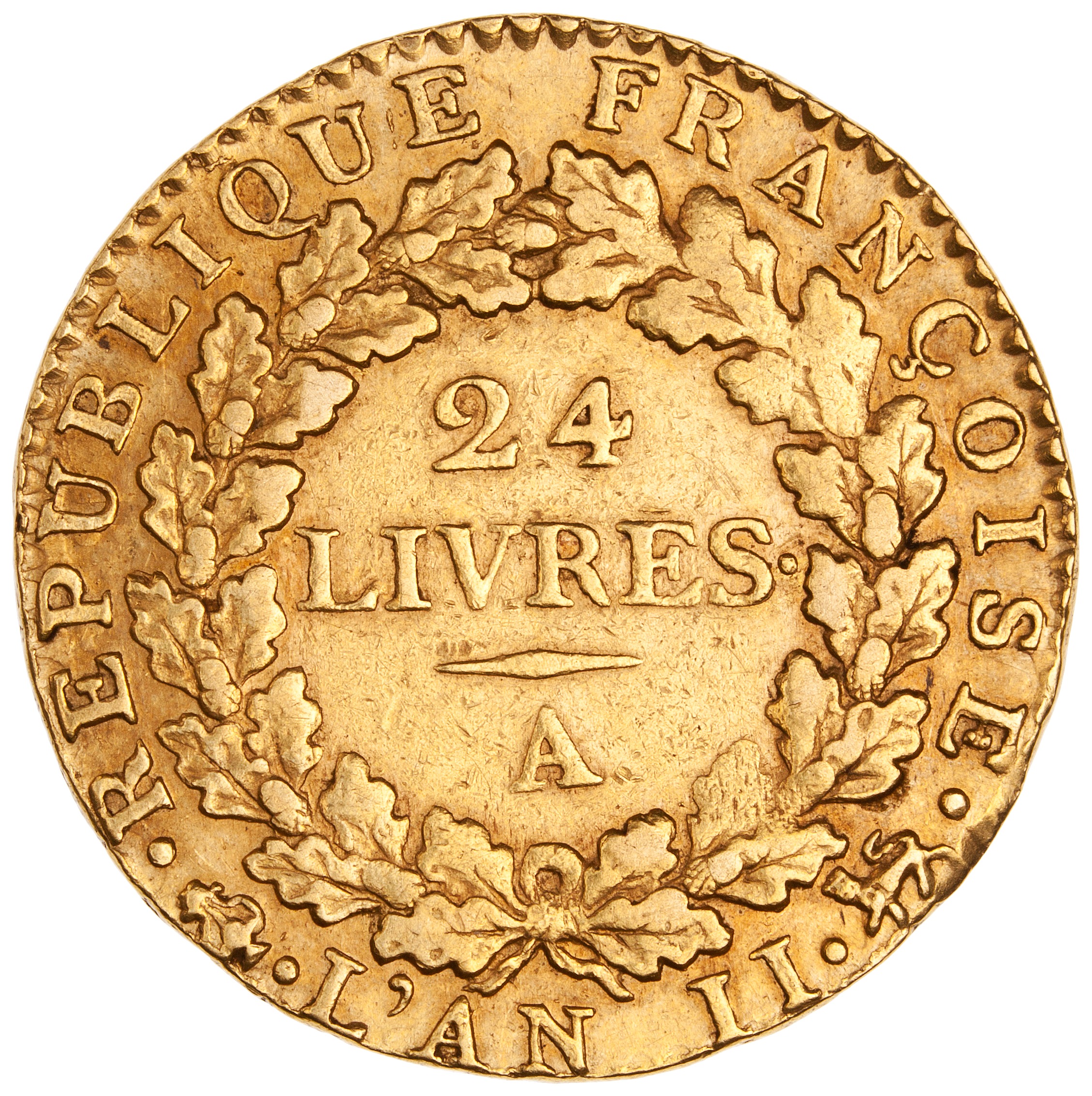
24 livre, 1793. Gold, 7.65 g. Paris (ANS 1920.147.248, gift of W. R. Powell).
Although the module of this coin is strictly identical to that of the louis, the explicit display of the face value has replaced the figure of the late king and constitutes a novelty for gold and silver coins.


6 livre, 1793. Silver, 29.45 g. Metz (ANS 1920.147.155, gift of W. R. Powell).
As with the louis, a mark of value replaced the figure of the king, while the module and weight are identical to those of the former écu.


5 franc, 1802-3. Silver, 24.805 g. Perpignan (ANS 1920.147.266, gift of W. R. Powell).
The republican authorities replaced the old monetary units of account with a rationalized decimal system based on francs, décimes, and centimes. The franc was defined in 1795 as 5 g of 90% pure silver and as such was nearly equivalent to the old livre. In reality, the Republic was unable to enforce the circulation of such a high-quality currency at that time and relied heavily on the depreciated paper money called assignats.
The Assignats
The financial debacle of the assignats (1791-1797) originated in the budgetary crisis which hit France as it was militarily attacked from all sides by nearly all the European powers. The assignats, issued in limited amount, were supposed to facilitate the sales of the vast, confiscated properties of the Church to the general public. As such, their notional amount should have remained below the value at stake, about 2 to 3 billion livres. As France had to use hard cash for its external supplies, it quickly ran out of precious metals and the assignats became compulsory paper money. By early 1793, their issued volume was higher than the properties supposed to guarantee them. By 1796, the overall stock of assignats was about 20 times the original French metallic money stock, and current prices had often increased by 500 times or more compared to 1790. The financial situation only stabilized with the conquests and looting of neighboring states. The young general Napoleon Bonaparte excelled at both.

10 livre assignat, 1791 (ANS 1992.117.4892, gift of Arthur Mintz).
(photo?)
15 sol assignat, 1792 (ANS 0000.999.51780).
Such a small denomination testifies to the growing use of assignats as day-to-day money even for small change.
(photo?)
5 livre assignat, 1793 (ANS 0000.999.51784).
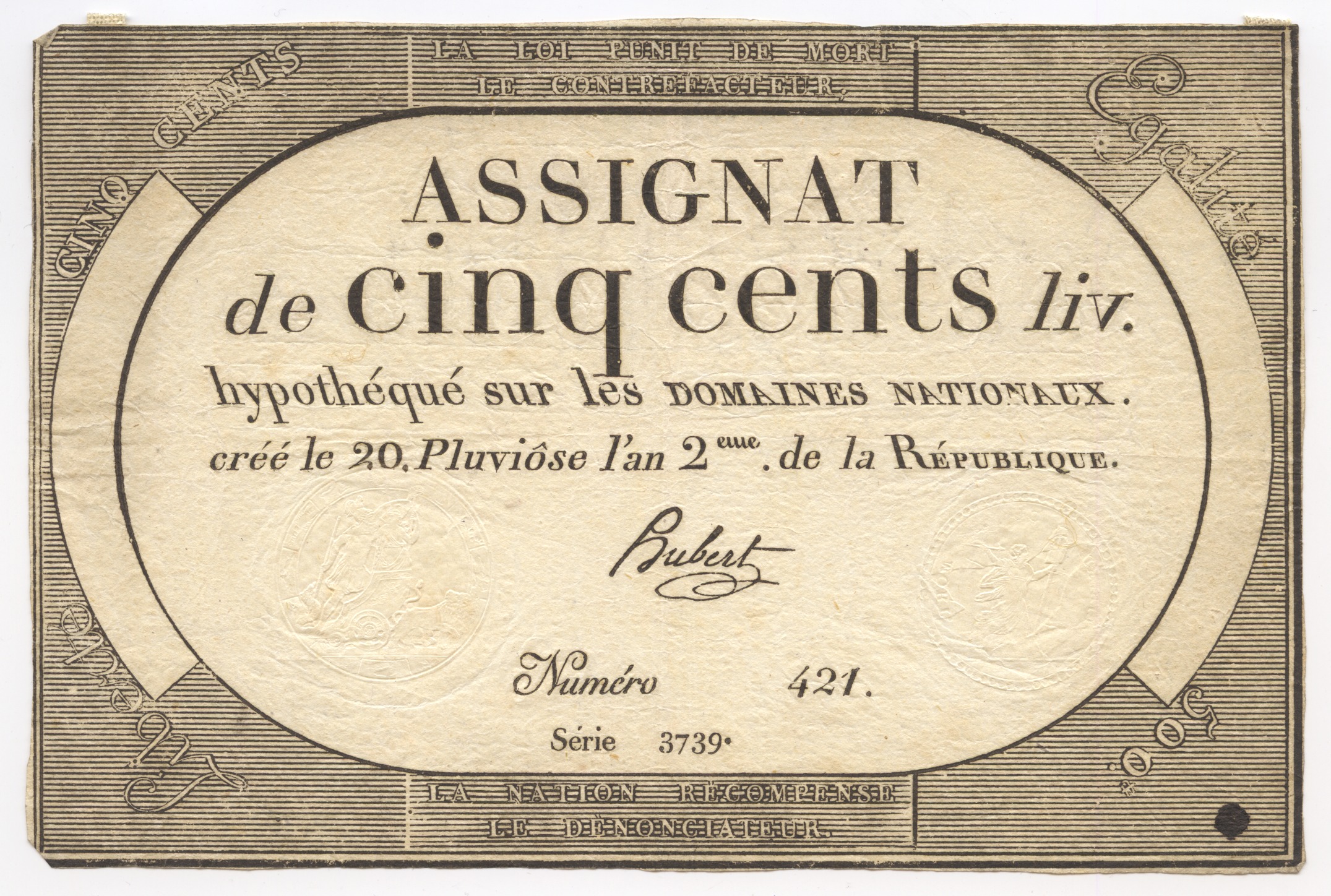
500 livre assignat, 1794 (ANS 0000.999.56431).
(photo?)
1,000 franc assignat, 1795 (ANS 1944.42.4, gift of Wayte Raymond).
By 1795, these francs had very little relationship to the approximately 290 g of gold that 1,000 livres (= francs) would have commanded in 1790-91.
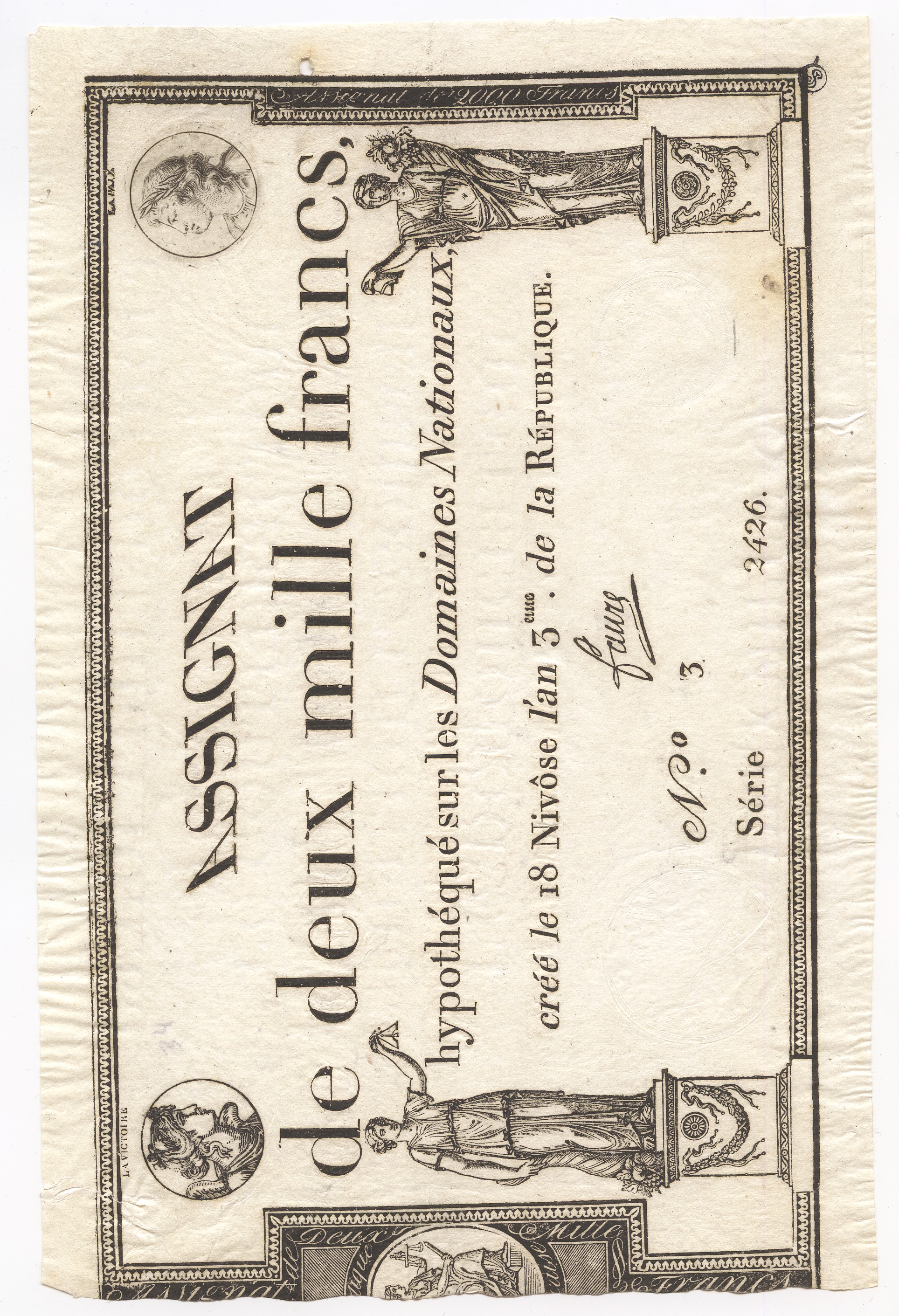
2,000 franc assignat, 1795 (ANS 0000.999.56432).
Napoleon and the Empire
On November 9, 1799, Napoleon Bonaparte seized power, overthrew the Directory and installed the Consulate, soon to be followed by the First Empire (December 2, 1804). The Franc was defined in 1803 as 0.3225 g of 90% pure gold and 5 g of 90% pure silver. This created a bimetallic system and effectively restored the monarchic standards, though in decimalized form. This definition of the franc would hold until the First World War, and in theory until 1928.
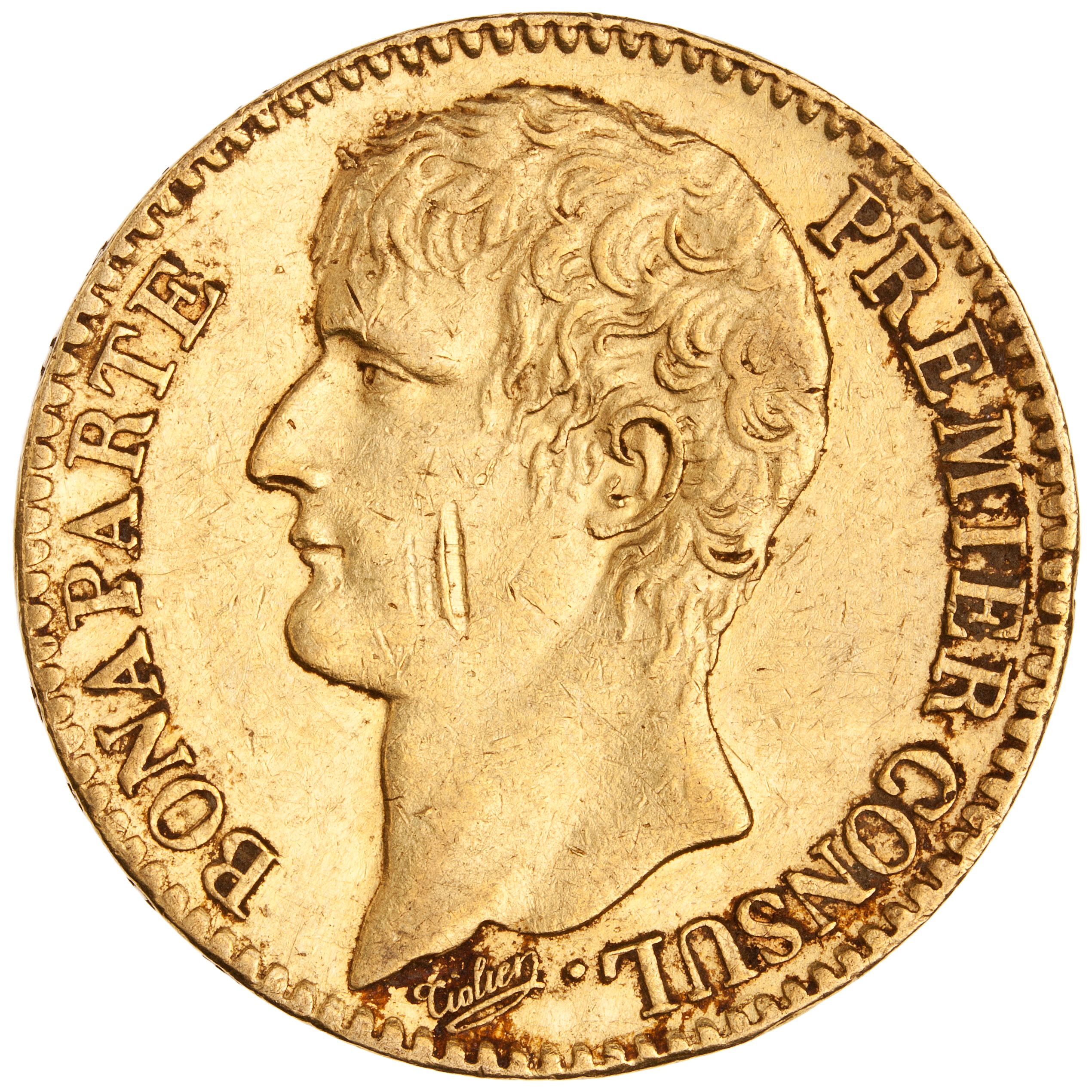
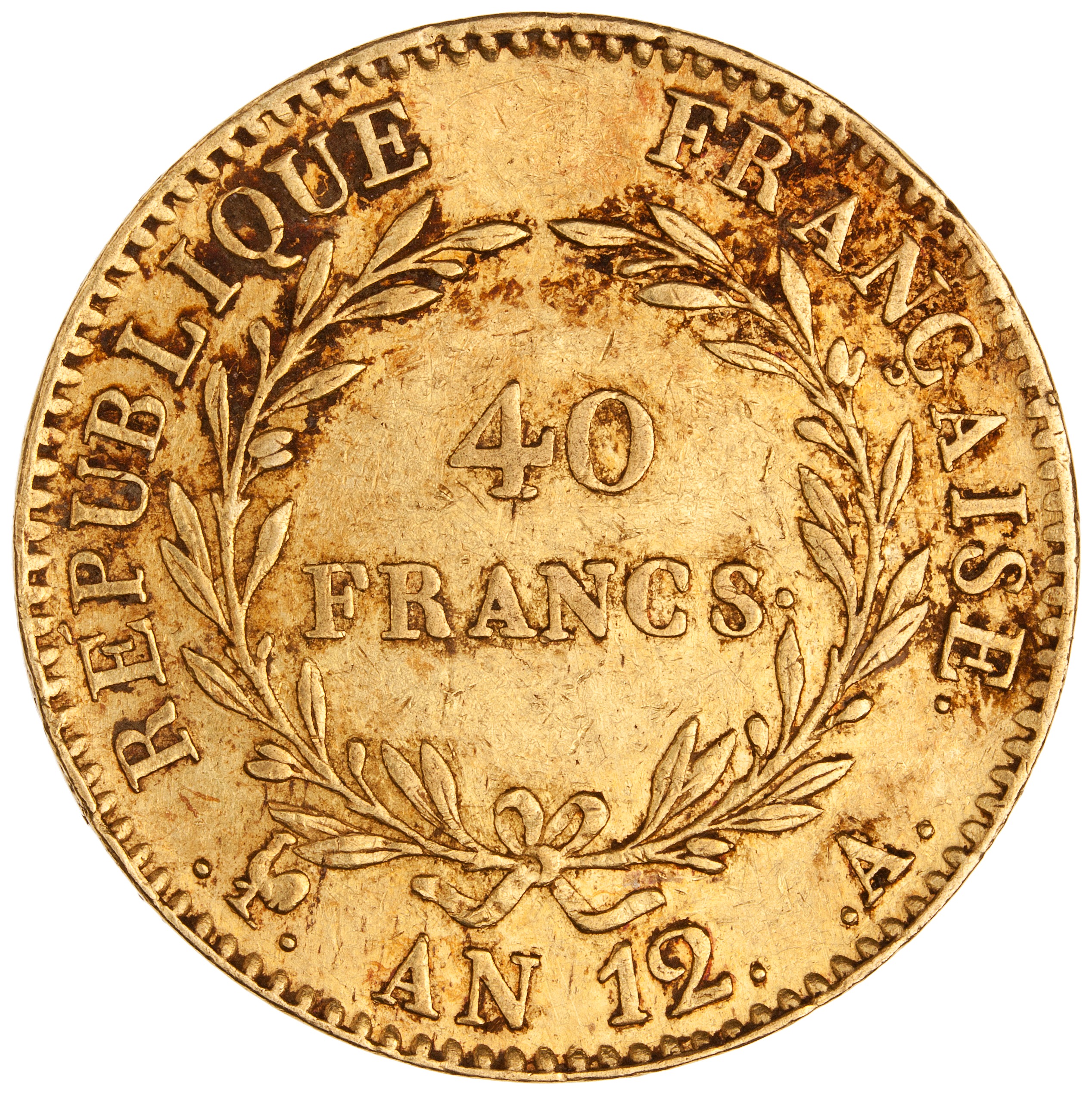
40 franc, 1804. Gold, 12.86 g. Paris (ANS 1983.184.4, gift of M. Sears).
The legend identifies the French Republic as issuer.


20 franc, 1803. Gold, 6.46 g. Paris (ANS 1966.164.324, bequest of A. Carson Simpson).


5 franc, 1804. Silver, 24.93 g. Bayonne (ANS 1919.142.7).


1/4 franc, 1804. Silver, 1.25 g. Paris (ANS 1920.147.274, gift of W. R. Powell).
There is an abbreviated mention of the French Republic, while “Napoleon Empereur” appears on the obverse.


10 centime, 1808. Copper, 1.94 g. Strasbourg (ANS 1931.27.66).
Any reference to the Republic is gone.
John Law’s System
A precursor to the assignat crisis had been the paper-money issue of John Law, in 1716-1720. France had been left financially shattered by the wars of Louis XIV. Under the Regency of Philippe of Orleans, trade and industry received a boost from his policy aiming at maintaining peace in Europe. Scottish financier John Law, on friendly terms with the Regent, opened a bank which could issue paper money in 1716. He was then granted the control of the Louisiana trade through the Mississippi Company. The value of the shares issued by the bank soon rocketed, as more paper money was injected into the economy by the Banque Royale. It led to general inflation and loss of confidence in 1720, until the entire structure collapsed and Law had to escape France under a disguise. That experiment deterred France from accepting paper money until the Revolution.

100 livre tournois banknote, January 1720 (ANS 1992.23.1).
The banknote states the guarantee that it could be redeemed in silver, something that soon could not be implemented.
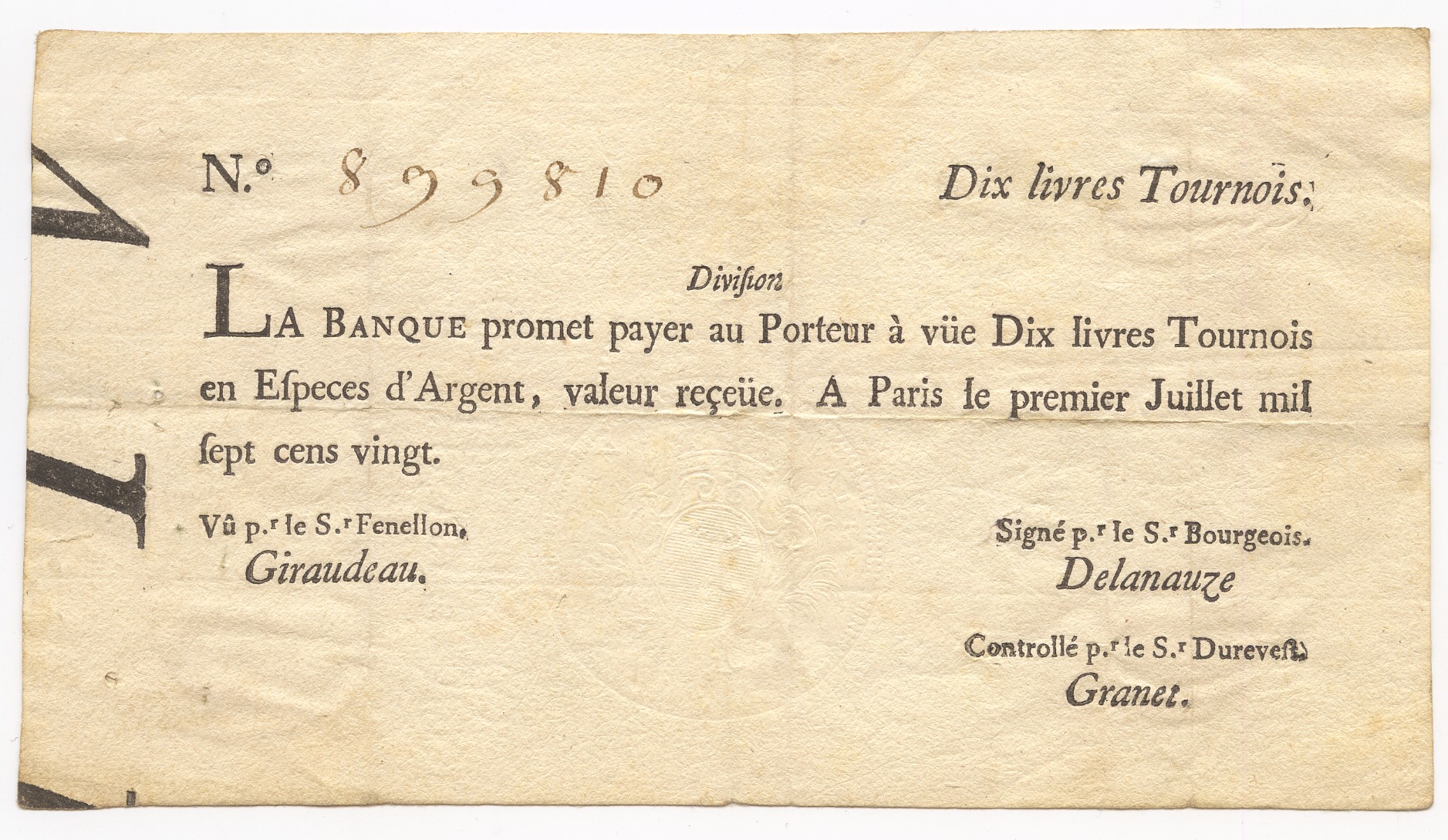
10 livre tournois banknote, July 1720 (ANS 1992.23.2).
By mid 1720 banknotes could no longer be signed by hand, as too many of them were printed.
Exhibition Parts
III. Rome: A Thousand Years of Inflation
IV. France: Inflation and Revolution



